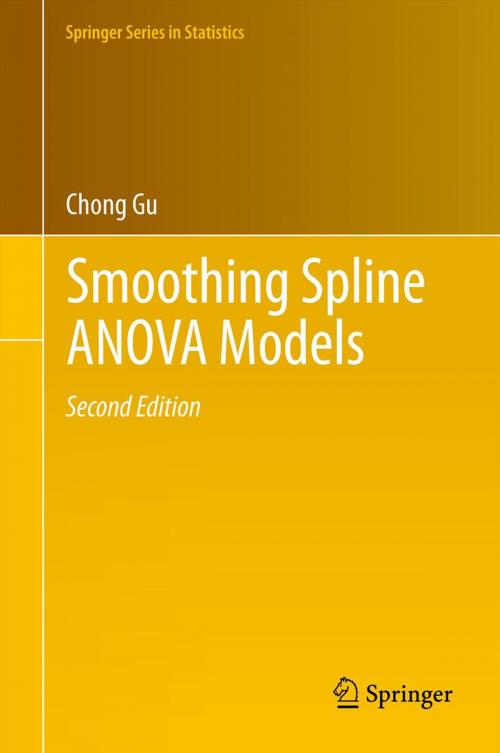| Author: | Chong Gu | ISBN: | 9781461453697 |
| Publisher: | Springer New York | Publication: | January 26, 2013 |
| Imprint: | Springer | Language: | English |
| Author: | Chong Gu |
| ISBN: | 9781461453697 |
| Publisher: | Springer New York |
| Publication: | January 26, 2013 |
| Imprint: | Springer |
| Language: | English |
Nonparametric function estimation with stochastic data, otherwise
known as smoothing, has been studied by several generations of
statisticians. Assisted by the ample computing power in today's
servers, desktops, and laptops, smoothing methods have been finding
their ways into everyday data analysis by practitioners. While scores
of methods have proved successful for univariate smoothing, ones
practical in multivariate settings number far less. Smoothing spline
ANOVA models are a versatile family of smoothing methods derived
through roughness penalties, that are suitable for both univariate and
multivariate problems.
In this book, the author presents a treatise on penalty smoothing
under a unified framework. Methods are developed for (i) regression
with Gaussian and non-Gaussian responses as well as with censored lifetime data; (ii) density and conditional density estimation under a
variety of sampling schemes; and (iii) hazard rate estimation with
censored life time data and covariates. The unifying themes are the
general penalized likelihood method and the construction of
multivariate models with built-in ANOVA decompositions. Extensive
discussions are devoted to model construction, smoothing parameter
selection, computation, and asymptotic convergence.
Most of the computational and data analytical tools discussed in the
book are implemented in R, an open-source platform for statistical
computing and graphics. Suites of functions are embodied in the R
package gss, and are illustrated throughout the book using simulated
and real data examples.
This monograph will be useful as a reference work for researchers in
theoretical and applied statistics as well as for those in other
related disciplines. It can also be used as a text for graduate level
courses on the subject. Most of the materials are accessible to a
second year graduate student with a good training in calculus and
linear algebra and working knowledge in basic statistical inferences
such as linear models and maximum likelihood estimates.
Nonparametric function estimation with stochastic data, otherwise
known as smoothing, has been studied by several generations of
statisticians. Assisted by the ample computing power in today's
servers, desktops, and laptops, smoothing methods have been finding
their ways into everyday data analysis by practitioners. While scores
of methods have proved successful for univariate smoothing, ones
practical in multivariate settings number far less. Smoothing spline
ANOVA models are a versatile family of smoothing methods derived
through roughness penalties, that are suitable for both univariate and
multivariate problems.
In this book, the author presents a treatise on penalty smoothing
under a unified framework. Methods are developed for (i) regression
with Gaussian and non-Gaussian responses as well as with censored lifetime data; (ii) density and conditional density estimation under a
variety of sampling schemes; and (iii) hazard rate estimation with
censored life time data and covariates. The unifying themes are the
general penalized likelihood method and the construction of
multivariate models with built-in ANOVA decompositions. Extensive
discussions are devoted to model construction, smoothing parameter
selection, computation, and asymptotic convergence.
Most of the computational and data analytical tools discussed in the
book are implemented in R, an open-source platform for statistical
computing and graphics. Suites of functions are embodied in the R
package gss, and are illustrated throughout the book using simulated
and real data examples.
This monograph will be useful as a reference work for researchers in
theoretical and applied statistics as well as for those in other
related disciplines. It can also be used as a text for graduate level
courses on the subject. Most of the materials are accessible to a
second year graduate student with a good training in calculus and
linear algebra and working knowledge in basic statistical inferences
such as linear models and maximum likelihood estimates.















